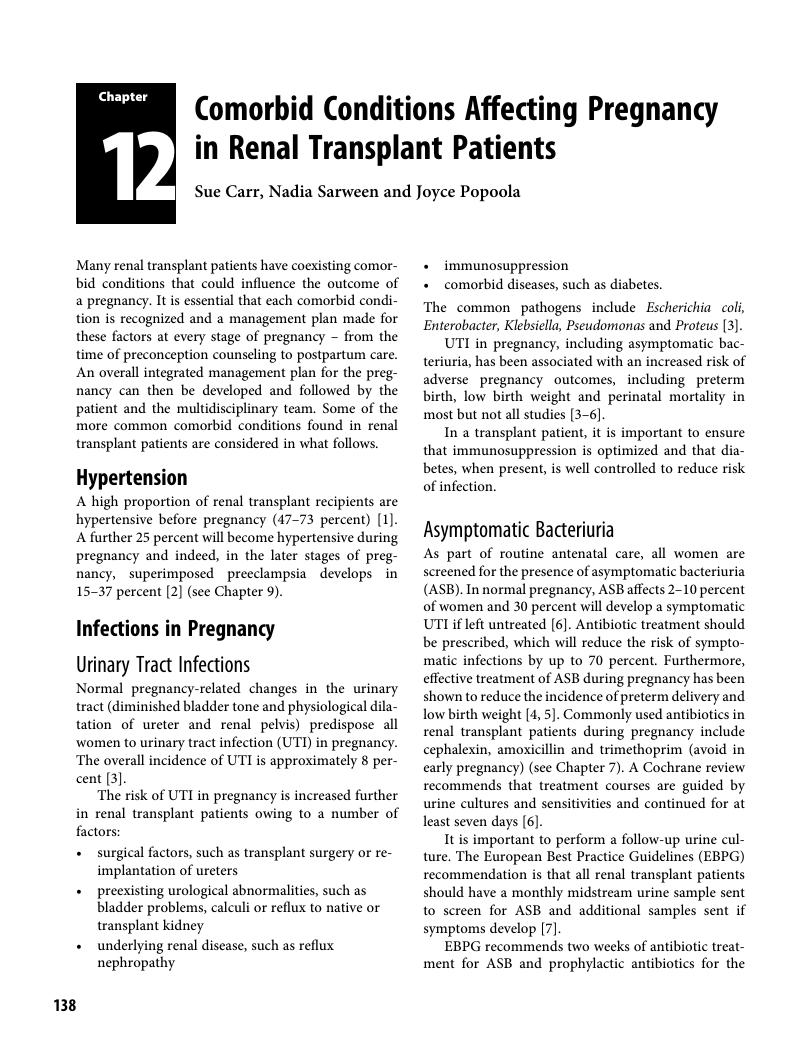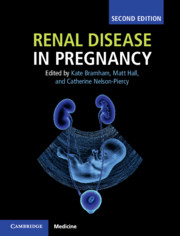Book contents
- Renal Disease in Pregnancy
- Renal Disease in Pregnancy
- Copyright page
- Contents
- Contributors
- Preface
- Section 1 Physiology
- Section 2 Prepregnancy Care
- Section 3 Antenatal Care
- Section 4 Postpartum
- Section 5 Special Conditions
- Chapter 10 Pregnancy and Dialysis
- Chapter 11 Pregnancy and the Renal Transplant Recipient
- Chapter 12 Comorbid Conditions Affecting Pregnancy in Renal Transplant Patients
- Chapter 13 Reflux Nephropathy in Pregnancy
- Chapter 14 Lupus and Vasculitis in Pregnancy
- Chapter 15 Diabetic Nephropathy in Pregnancy
- Chapter 16 Urological Problems in Pregnancy
- Section 6 Acute Kidney Injury
- Appendix: Consensus Statements 2017
- Index
- References
Chapter 12 - Comorbid Conditions Affecting Pregnancy in Renal Transplant Patients
from Section 5 - Special Conditions
Published online by Cambridge University Press: 19 May 2018
- Renal Disease in Pregnancy
- Renal Disease in Pregnancy
- Copyright page
- Contents
- Contributors
- Preface
- Section 1 Physiology
- Section 2 Prepregnancy Care
- Section 3 Antenatal Care
- Section 4 Postpartum
- Section 5 Special Conditions
- Chapter 10 Pregnancy and Dialysis
- Chapter 11 Pregnancy and the Renal Transplant Recipient
- Chapter 12 Comorbid Conditions Affecting Pregnancy in Renal Transplant Patients
- Chapter 13 Reflux Nephropathy in Pregnancy
- Chapter 14 Lupus and Vasculitis in Pregnancy
- Chapter 15 Diabetic Nephropathy in Pregnancy
- Chapter 16 Urological Problems in Pregnancy
- Section 6 Acute Kidney Injury
- Appendix: Consensus Statements 2017
- Index
- References
Summary

- Type
- Chapter
- Information
- Renal Disease in Pregnancy , pp. 138 - 151Publisher: Cambridge University PressPrint publication year: 2018



